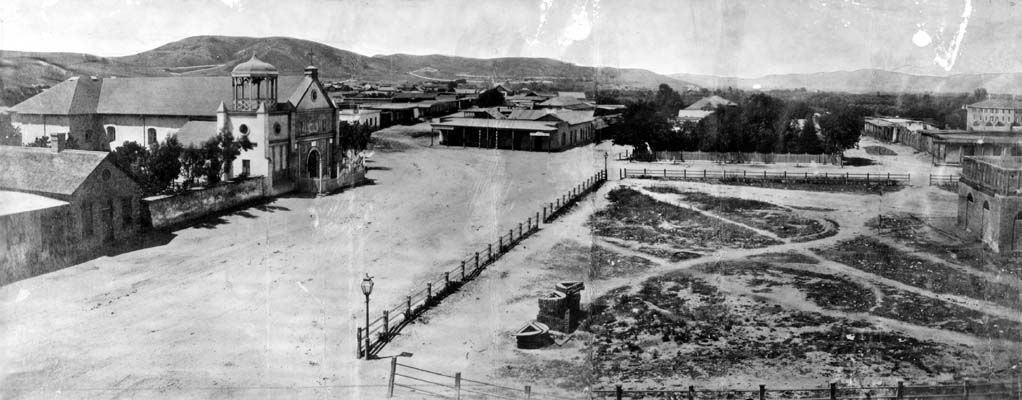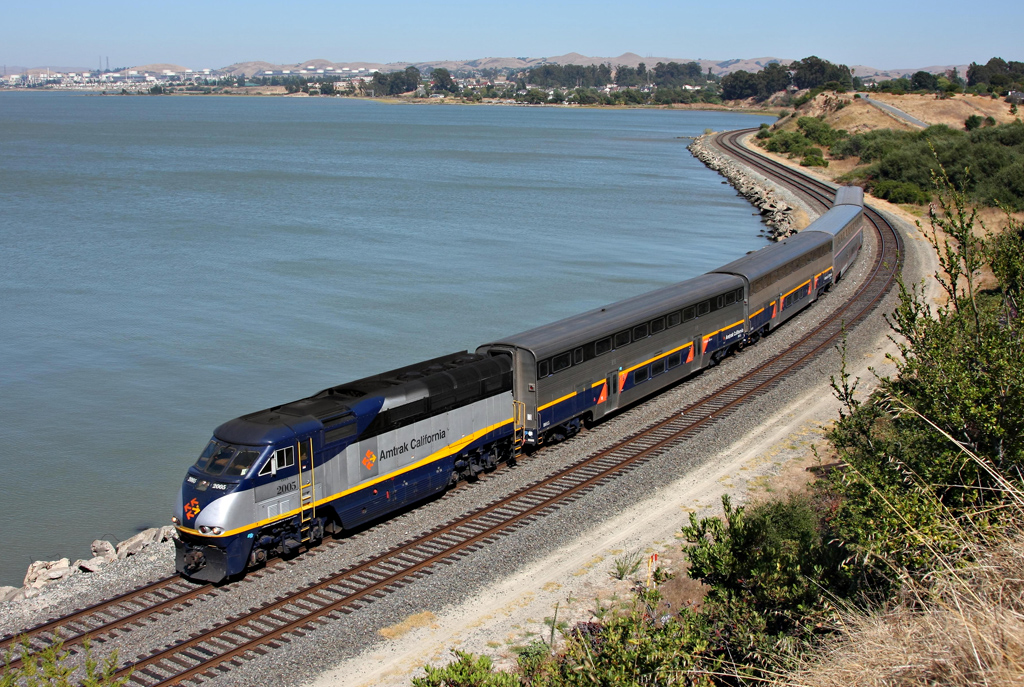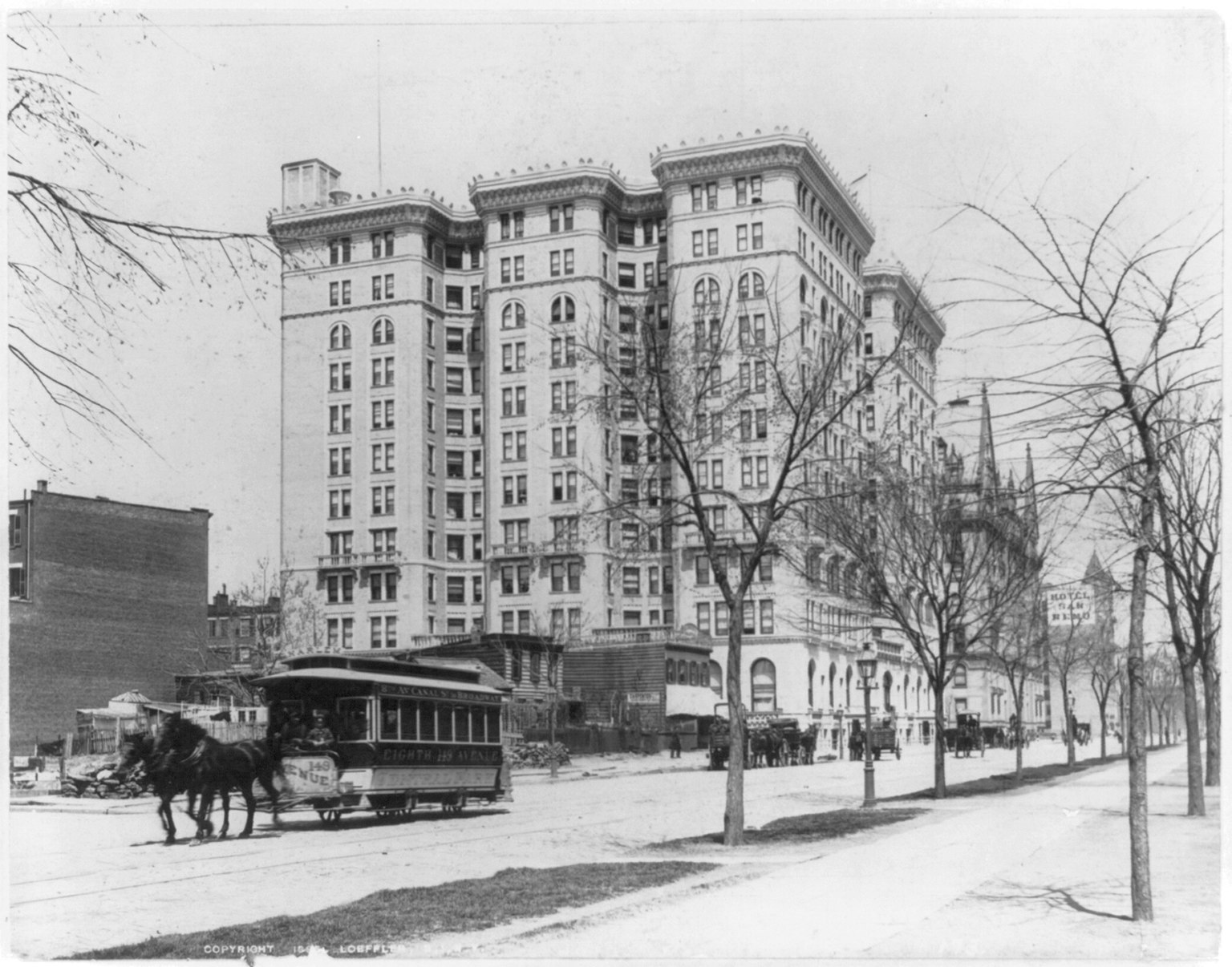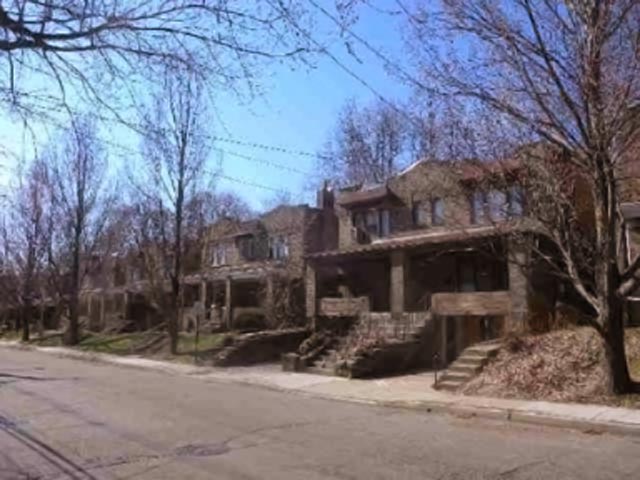|
Western And Franklin Avenue Line
The Western and Franklin Avenue Line was a Pacific Electric streetcar line which traveled from Los Angeles to Hollywood. It operated from 11th and Hill Streets via Hill, Sunset, Santa Monica Boulevard, Western Avenue, Franklin Avenue, Argyle Avenue, Yucca Street, and Vine Street to end at Hollywood and Vine Boulevards. It operated from 1908 to 1940. The Brush Canyon Line branched from this line at Bronson. History Tracks on Western and Franklin were built by the Los Angeles Pacific Railroad in 1908 and were converted to standard gauge only a month after completion. Double tracking on Western Avenue was completed in 1910 and the line was acquired by Pacific Electric in 1911 as part of the Great Merger. Some outbound trips continued west on Hollywood Boulevard to terminate at the West Hollywood station following PE's acquisition, though this ended by 1912. Between February 1922 and July 1924 the route operated as a shuttle service between Santa Monica/Western and Hollywood/Vine. ... [...More Info...] [...Related Items...] OR: [Wikipedia] [Google] [Baidu] |
Streetcar
A tram (called a streetcar or trolley in North America) is a rail vehicle that travels on tramway tracks on public urban streets; some include segments on segregated right-of-way. The tramlines or networks operated as public transport are called tramways or simply trams/streetcars. Many recently built tramways use the contemporary term light rail. The vehicles are called streetcars or trolleys (not to be confused with trolleybus) in North America North America is a continent in the Northern Hemisphere and almost entirely within the Western Hemisphere. It is bordered to the north by the Arctic Ocean, to the east by the Atlantic Ocean, to the southeast by South America and the Car ... and trams or tramcars elsewhere. The first two terms are often used interchangeably in the United States, with ''trolley'' being the preferred term in the eastern US and ''streetcar'' in the western US. ''Streetcar'' or ''tramway'' are preferred in Canada. In parts of the Unite ... [...More Info...] [...Related Items...] OR: [Wikipedia] [Google] [Baidu] |
Venice Boulevard Line
The Venice Boulevard Line (formerly the West 16th Street Line) was a local streetcar line of the Pacific Electric. It operated between Downtown Los Angeles and Pico/Rimpau, Vineyard Junction, where riders could transfer to interurban cars. Nearly all Venice Short Line cars did not accept local passengers, leaving this as the primary streetcar service along its namesake boulevard. Route From the outbound terminal at Vineyard Junction, the line ran east on Venice Boulevard (formerly known as 16th Street), turning north at Hill Street and running until the Hill Street Station. Early runs continued slightly further north to 4th Street and ending at Broadway. Later in its life, cars operated west of Vineyard as far as San Vicente and Genesee Street. Near Western Avenue, a set of sidings allowed interurban cars to bypass locals. History Portions of the route were constructed by the Los Angeles Traction Company beginning in 1896, and it was completed between Hill Street Station and Vine ... [...More Info...] [...Related Items...] OR: [Wikipedia] [Google] [Baidu] |
Railway Lines Closed In 1950
Rail transport (also known as train transport) is a means of transport that transfers passengers and goods on wheeled vehicles running on rails, which are incorporated in tracks. In contrast to road transport, where the vehicles run on a prepared flat surface, rail vehicles (rolling stock) are directionally guided by the tracks on which they run. Tracks usually consist of steel rails, installed on sleepers (ties) set in ballast, on which the rolling stock, usually fitted with metal wheels, moves. Other variations are also possible, such as "slab track", in which the rails are fastened to a concrete foundation resting on a prepared subsurface. Rolling stock in a rail transport system generally encounters lower frictional resistance than rubber-tyred road vehicles, so passenger and freight cars (carriages and wagons) can be coupled into longer trains. The operation is carried out by a railway company, providing transport between train stations or freight customer facilit ... [...More Info...] [...Related Items...] OR: [Wikipedia] [Google] [Baidu] |
1908 Establishments In California
Nineteen or 19 may refer to: * 19 (number), the natural number following 18 and preceding 20 * one of the years 19 BC, AD 19, 1919, 2019 Films * ''19'' (film), a 2001 Japanese film * ''Nineteen'' (film), a 1987 science fiction film Music * 19 (band), a Japanese pop music duo Albums * ''19'' (Adele album), 2008 * ''19'', a 2003 album by Alsou * ''19'', a 2006 album by Evan Yo * ''19'', a 2018 album by MHD * ''19'', one half of the double album '' 63/19'' by Kool A.D. * '' Number Nineteen'', a 1971 album by American jazz pianist Mal Waldron * ''XIX'' (EP), a 2019 EP by 1the9 Songs * "19" (song), a 1985 song by British musician Paul Hardcastle. * "Nineteen", a song by Bad4Good from the 1992 album ''Refugee'' * "Nineteen", a song by Karma to Burn from the 2001 album ''Almost Heathen''. * "Nineteen" (song), a 2007 song by American singer Billy Ray Cyrus. * "Nineteen", a song by Tegan and Sara from the 2007 album '' The Con''. * "XIX" (song), a 2014 song by Slipkno ... [...More Info...] [...Related Items...] OR: [Wikipedia] [Google] [Baidu] |
Railway Lines Opened In 1908
Rail transport (also known as train transport) is a means of transport that transfers passengers and goods on wheeled vehicles running on rails, which are incorporated in tracks. In contrast to road transport, where the vehicles run on a prepared flat surface, rail vehicles ( rolling stock) are directionally guided by the tracks on which they run. Tracks usually consist of steel rails, installed on sleepers (ties) set in ballast, on which the rolling stock, usually fitted with metal wheels, moves. Other variations are also possible, such as "slab track", in which the rails are fastened to a concrete foundation resting on a prepared subsurface. Rolling stock in a rail transport system generally encounters lower frictional resistance than rubber-tyred road vehicles, so passenger and freight cars (carriages and wagons) can be coupled into longer trains. The operation is carried out by a railway company, providing transport between train stations or freight customer ... [...More Info...] [...Related Items...] OR: [Wikipedia] [Google] [Baidu] |
Pacific Electric Routes
The Pacific Ocean is the largest and deepest of Earth's five oceanic divisions. It extends from the Arctic Ocean in the north to the Southern Ocean (or, depending on definition, to Antarctica) in the south, and is bounded by the continents of Asia and Oceania in the west and the Americas in the east. At in area (as defined with a southern Antarctic border), this largest division of the World Ocean—and, in turn, the hydrosphere—covers about 46% of Earth's water surface and about 32% of its total surface area, larger than Earth's entire land area combined .Pacific Ocean . '' Britannica Concise.'' 2008: Encyclopædia Britannica, Inc. The centers of both the [...More Info...] [...Related Items...] OR: [Wikipedia] [Google] [Baidu] |
Light Rail In California
Light or visible light is electromagnetic radiation that can be perceived by the human eye. Visible light is usually defined as having wavelengths in the range of 400–700 nanometres (nm), corresponding to frequencies of 750–420 terahertz, between the infrared (with longer wavelengths) and the ultraviolet (with shorter wavelengths). In physics, the term "light" may refer more broadly to electromagnetic radiation of any wavelength, whether visible or not. In this sense, gamma rays, X-rays, microwaves and radio waves are also light. The primary properties of light are intensity, propagation direction, frequency or wavelength spectrum and polarization. Its speed in a vacuum, 299 792 458 metres a second (m/s), is one of the fundamental constants of nature. Like all types of electromagnetic radiation, visible light propagates by massless elementary particles called photons that represents the quanta of electromagnetic field, and can be analyzed as both waves and particles ... [...More Info...] [...Related Items...] OR: [Wikipedia] [Google] [Baidu] |
History Of Los Angeles
The history of Los Angeles began in 1781 when 44 settlers from central New Spain (modern Mexico) established a permanent settlement in what is now Downtown Los Angeles, as instructed by Spanish Governor of Las Californias, Felipe de Neve, and authorized by Viceroy Antonio María de Bucareli. After sovereignty changed from Mexico to the United States in 1848, great changes came from the completion of the Santa Fe Railroad, Santa Fe railroad line from Chicago to Los Angeles in 1885. "Overlanders" flooded in, mostly white Protestantism, Protestants from the Lower Midwestern United States, Midwest and Southern United States, South. Los Angeles had a strong economic base in farming, oil, tourism, real estate and movies. It grew rapidly with many suburban areas inside and outside the city limits. Cinema of the United States, Its motion picture industry made the city world-famous, and World War II brought new industry, especially high-tech aircraft construction. Politically the city was m ... [...More Info...] [...Related Items...] OR: [Wikipedia] [Google] [Baidu] |
History Of Rail Transportation In California
The establishment of America's transcontinental rail lines securely linked California to the rest of the country, and the far-reaching transportation systems that grew out of them during the century that followed contributed to the state's social, political, and economic development. When California was admitted as a state to the United States in 1850, and for nearly two decades thereafter, it was in many ways isolated, an outpost on the Pacific, until the first transcontinental railroad was completed in 1869. Passenger rail transportation declined in the early- and mid-20th Century with the rise of the state's car culture and road system. It has since undergone something of a renaissance, with the introduction of services such as Metrolink, Coaster, Caltrain, Amtrak California, and others. On November 4, 2008, the People of California passed Proposition 1A, which helped provide financing for a high-speed rail line. 19th century Background The early Forty-Niners of the Califo ... [...More Info...] [...Related Items...] OR: [Wikipedia] [Google] [Baidu] |
List Of California Railroads
The following railroads operate in the U.S. state of California. __TOC__ Common freight carriers Freight carrier information is current . Other *Mare Island Rail Service (MIRS) * Oakland Global Rail Enterprise (OGRE) **West Oakland Pacific Railroad **Port of Oakland Railway (POAK) *Southern California Railroad (SCRR) *USG Corporation (USG) Passenger carriers Intercity *Amtrak (AMTK): ''California Zephyr'', ''Coast Starlight'', ''Southwest Chief'', ''Sunset Limited'' *Amtrak California (CDTX): ''Capitol Corridor'', ''Pacific Surfliner'' and '' San Joaquin'' *''California High-Speed Rail (under construction)'' Commuter rail *Altamont Corridor Express (ACE) *Arrow *Caltrain (JPBX) * Coaster (SDNX) * Metrolink (SCAX) *Peninsula Commute *Sonoma–Marin Area Rail Transit (SMART) Local *Bay Area Rapid Transit (BART) ** eBART ** Coliseum–Oakland International Airport line (people mover) * Los Angeles County Metro Rail (LACZ) *San Francisco Municipal Railway (MUNI) **Muni M ... [...More Info...] [...Related Items...] OR: [Wikipedia] [Google] [Baidu] |
Streetcars In North America
Streetcars or trolley(car)s (North American English for the European word ''tram'') were once the chief mode of public transit in hundreds of North American cities and towns. Most of the original urban streetcar systems were either dismantled in the mid-20th century or converted to other modes of operation, such as light rail. Today, only Toronto still operates a streetcar network essentially unchanged in layout and mode of operation. Older surviving lines and systems in Boston, Cleveland, Mexico City, Newark, Philadelphia, Pittsburgh, and San Francisco were often infrastructure-heavy systems with tunnels, dedicated right-of-way, and long travel distances, or have largely rebuilt their streetcar systems as light rail systems. About 22 North American cities, starting with Edmonton, Calgary and San Diego, have installed new light rail systems, some of which run along historic streetcar corridors. A few recent cases feature mixed-traffic street-running operation like a streetca ... [...More Info...] [...Related Items...] OR: [Wikipedia] [Google] [Baidu] |
Streetcar Suburb
A streetcar suburb is a residential community whose growth and development was strongly shaped by the use of streetcar lines as a primary means of transportation. Such suburbs developed in the United States in the years before the automobile, when the introduction of the electric trolley or streetcar allowed the nation’s burgeoning middle class to move beyond the central city’s borders. Early suburbs were served by horsecars, but by the late 19th century cable cars and electric streetcars, or trams, were used, allowing residences to be built farther away from the urban core of a city. Streetcar suburbs, usually called additions or extensions at the time, were the forerunner of today's suburbs in the United States and Canada. San Francisco's Western Addition is one of the best examples of streetcar suburbs before westward and southward expansion occurred. Although most closely associated with the electric streetcar, the term can be used for any suburb originally built with ... [...More Info...] [...Related Items...] OR: [Wikipedia] [Google] [Baidu] |


.jpg)
.jpg)



